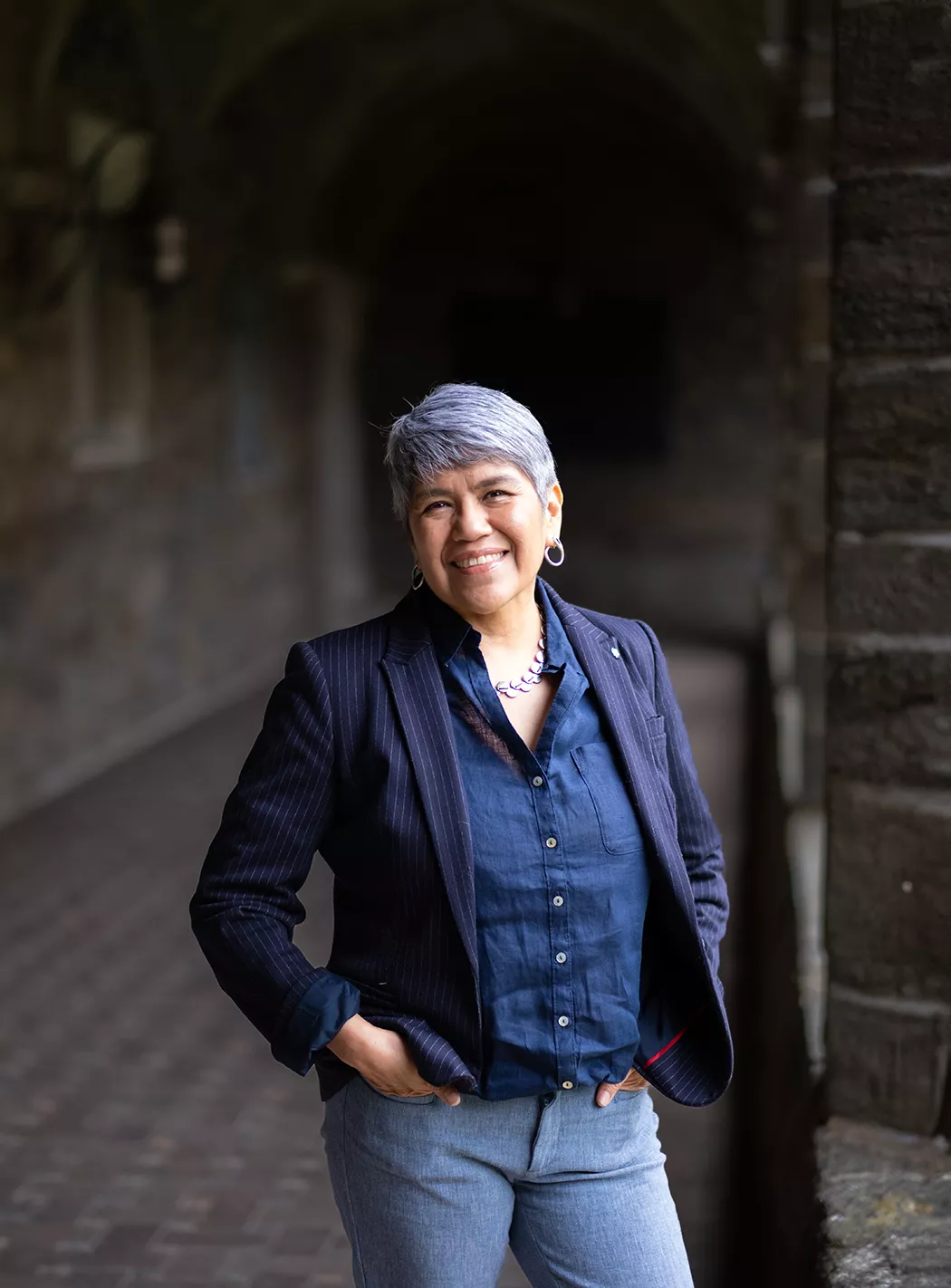Faculty Profile
Associate Professor of Sociology and Co-Director of Latin American, Iberian, and Latina/o Studies Veronica Montes
What brought you to Bryn Mawr?
Two things brought me to Bryn Mawr. One is the college. I knew I wanted to be in an environment closer to students.
Also, because of Philadelphia. I was also looking at places to live, and one thing I found out is the Latino—and particularly the Mexican—migrant community in Philadelphia has been growing for the last 20 years. For my dissertation, I did a project that featured migrant communities, and one of the communities was in Kennett Square. So, Bryn Mawr provided me the opportunity to continue my research and to have a very close relationship with the students.
Tell us more about your research.
In the last few years, I’ve been focusing on the experience of immigrant mothers who were deported to Mexico. They have been organizing in hopes of being able to come back to the United States legally to reunite with their families because they have been separated for so many years. There are a couple of mothers who were separated from their families for more than a decade. In December 2018, this mother was finally able to reunite with her family. This is a collaborative project with my colleague Erika Busse, from Macalester College. We have published a couple of articles based on these women and we are in the process of writing a book.
During the pandemic, I was volunteering for Juntos, which is a grassroots organization that supports advocacy for immigrants, on a program they launched to support the immigrant community in applying for housing support. Juntos along with other local grassroots organizations identified that the Latino immigrant community was not accessing to this program due to lack of information.
I teach classes on migration, obviously, but one of them is Mexican Migrant Communities. This is a course I have been teaching since I arrived at Bryn Mawr, this is my seventh or eighth time. One of the things we cover is the political economy of nostalgia, which refers to the consumption of products immigrants were used to consume in their homelands. In the fall semester, there is an event in Philadelphia, Día de Muertos, the Day of the Dead. I take the students to explore and experience what it is for a migrant community to have these events that connect them to their communities of origin. I also teach Sociology of Migration, examining the meaning of borders and the intersection between migration, labor, and capitalism. Another course I teach is Women in Society, which I think is one of my favorites, and I think it’s one of the most popular among the students.
Another course I teach is Migrant Communities of Philadelphia, which is part of the Tri-Co program. I didn’t know anything about the migration history of Philadelphia, but as I started learning about it I just fell in love … learning about the different migrant communities (in Philadelphia) over the last 350 years, there are so many similarities, such as the desire to provide a better life for their families.”
You have been teaching at Bryn Mawr for nearly a decade, since 2015. What are some of the most significant changes in your area of study over that time?
I think one of the biggest changes we’ve seen over the last 10 years is the change in terms of the figure of the migrant. Before, we were more used to seeing single young men, mainly from Mexico and Central America. Now, we see more women, families, and unaccompanied minors coming not only from Central America and Mexico but also from Asia, Africa, and even Europe, as is the case for people from Ukraine and Russia.
For instance, in 2017, we went to the US-Mexico border as part of the 360° Program and had a conversation in a migrant shelter. They told us they were keeping records of the people and where they were coming from, and they recorded 45 different countries. In terms of migration policies, there have been so many changes, particularly at the border. Before, it was more economic migrants, but now it’s more people trying to apply for asylum.
You also study the precariousness of social services provided to the Mexican migrant community in Philadelphia in the context of the Covid-19 pandemic. How has that research been affected in the past few years as facets of society push to return to pre-pandemic norms?
I think during the pandemic, the precarity, something that had been there, became clear. The lack of access to health services, for example. If anyone in their family was without documents, the entire family was ineligible to get those stimulus checks. For many families, they were able to survive because they were using their savings. Now, people have depleted their savings, and are getting very indebted because they have to lend money to family members. With the pandemic, many people lost anything they had.
How do you draw on your own immigrant experience in your teaching and research? Does sharing your story help students to connect with the subject?
I’m very transparent and honest, because there is no way for me to hide my identity in that sense. I think it is something that is very impactful for many students, especially for the students who identify their own stories on me. For many students, even though they are second generation, their background, their family migration stories resonate.
I share that in some cases, some of those topics are very close to home. There are still some family members living in the U.S. without documents. Having crossed the border myself when I was 18 years old, talking about all those things is so important to humanize the figure of the migrant. Despite the struggle, despite those challenges, we are here, we are contributing, we are becoming part of the history of this country, so I think at the end of the day, the students appreciate it. Not only the Latino students, but other students. In the case of students who are not Latinos, they say, ‘My grandparents came from Germany, from Italy, and your class has made me think about going back and talking to my grandparents about the experience.’ I think the students appreciate having someone who not only teaches but who connects theory with her own personal migration history. Having an immigrant in front of them helps put a human face to those topics that can sometimes be very abstract.
What is your favorite part of teaching at Bryn Mawr?
It’s very interesting to see the students from the first semester and then when they leave as seniors; I can see how they have grown intellectually and emotionally and how they have matured. I think that’s a unique opportunity.
For the last couple of years, I have been thinking about how having the opportunity to be so close to students at this point in their lives is so crucial for many of them and us as professors. This year, I became a faculty Posse mentor, which has allowed me to see mentorship from a different perspective. Being a Posse mentor is another level of commitment. Having a close relationship with the students, being able to teach courses that are my own interest, having this sort of freedom, the opportunity to be creative in terms of the design of courses. It’s a lot of room for us as professors to be creative, to develop new courses, to explore other things. I think the students can see the excitement of being able to bring all those different experiences.
Published on: 05/29/2024

